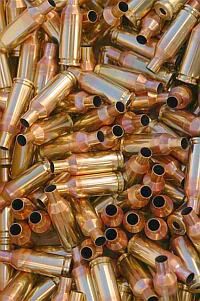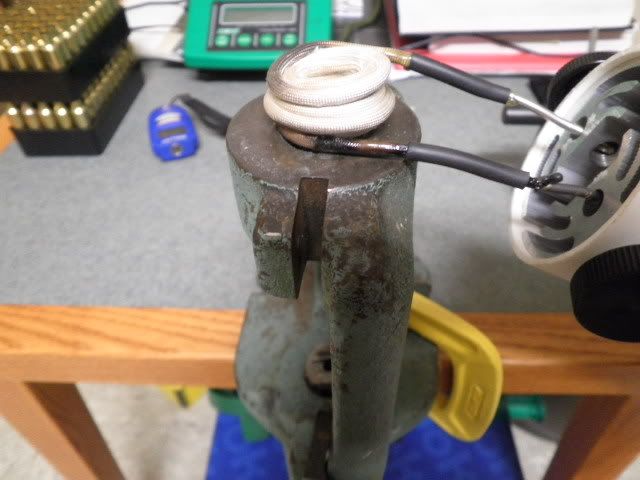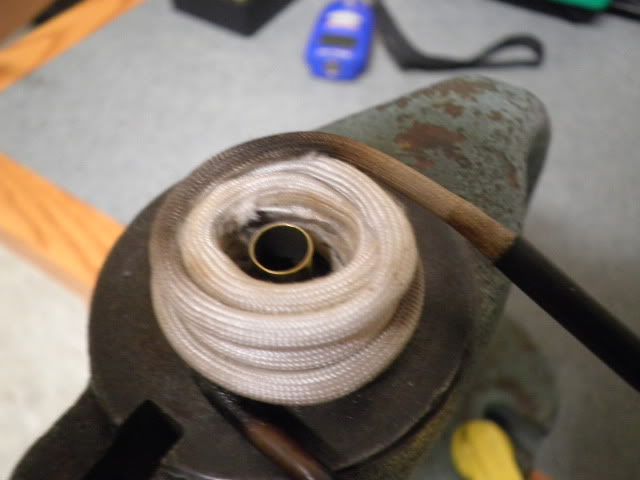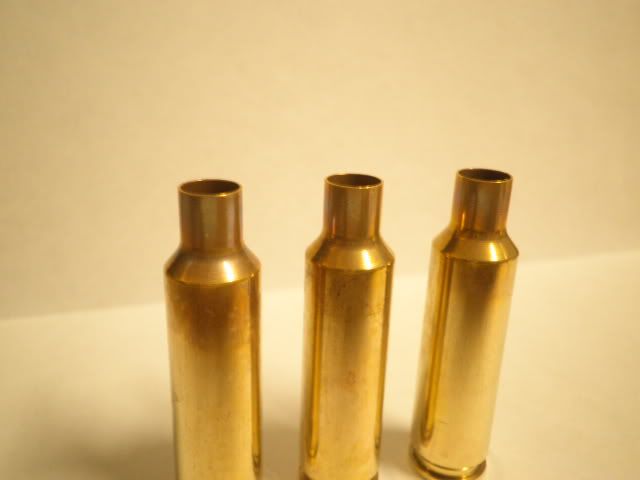Before reading all this, Im stating that I'm assumeing there will always be a visual difference between clean, non-annealed brass and that same peice of brass having been properly annealed using induction heating.
OK, well I have had the equipment to anneal via induction heating for quite some time.
If a list of my equipment and set-up are revelant... it is as fallows.
GraLab 450 Timer
Mini-Duct Induction Heater
Tempil TempStick Complete Test Set (125* - 800* Range)
The heater, when plugged up to the GraLab, can be controled down to the 10th of a second.
The coil of the heater is set flat and center on the top of a single stage press.
The brass is ran up into the press.
Timer is started.
Once the time has elapsed, the heater shuts off and the brass comes out and goes into some water.
I determined the correct height the brass needs to be in the coil, and the appropirate time using the tempil test kit.
(Bottom 1/2 of the case does not go above 450*, the neck and shoulder are hotter than 700*, but cooler than 800*, for 6 seconds)
Bottom line is, after doing 100 cases, every one of them look as sparking shiney as before I started. I could care less if they look like factory Lapua brass, but I do care if they are being properly annealed. My Tempil test kit is saying Im in the right tempurature range, confined to the correct area of the case, for a suitable ammount of time (no more than a FEW (?) seconds (per the referance http://www.6mmbr.com/annealing.html)
So is the fact that they look no different afterwards indicating Im not accomplishing the task, or do I just not get the bonus of cool looking necks and shoulders...
If pictures are needed, let me know and Ill set up and take some...
As always guys, thanks in advance for any help, and happy Laybor Day weekend...
OK, well I have had the equipment to anneal via induction heating for quite some time.
If a list of my equipment and set-up are revelant... it is as fallows.
GraLab 450 Timer
Mini-Duct Induction Heater
Tempil TempStick Complete Test Set (125* - 800* Range)
The heater, when plugged up to the GraLab, can be controled down to the 10th of a second.
The coil of the heater is set flat and center on the top of a single stage press.
The brass is ran up into the press.
Timer is started.
Once the time has elapsed, the heater shuts off and the brass comes out and goes into some water.
I determined the correct height the brass needs to be in the coil, and the appropirate time using the tempil test kit.
(Bottom 1/2 of the case does not go above 450*, the neck and shoulder are hotter than 700*, but cooler than 800*, for 6 seconds)
Bottom line is, after doing 100 cases, every one of them look as sparking shiney as before I started. I could care less if they look like factory Lapua brass, but I do care if they are being properly annealed. My Tempil test kit is saying Im in the right tempurature range, confined to the correct area of the case, for a suitable ammount of time (no more than a FEW (?) seconds (per the referance http://www.6mmbr.com/annealing.html)
So is the fact that they look no different afterwards indicating Im not accomplishing the task, or do I just not get the bonus of cool looking necks and shoulders...
If pictures are needed, let me know and Ill set up and take some...
As always guys, thanks in advance for any help, and happy Laybor Day weekend...








